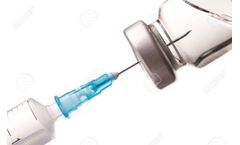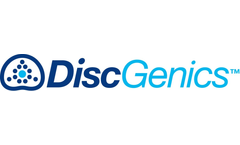Injectable Cell Articles & Analysis: Older
12 articles found
Additionally, bone morphogenetic protein-2 (BMP-2) mRNA was loaded into the LNP, which exhibited excellent bone microenvironment targeting capability and high expression of BMP-2 in bone tissue after intravenous injection. Cell-Specific LNP for Systemic Delivery To achieve more specific mRNA delivery systems, cell-targeted LNPs have been ...
We absolutely love hearing stem cell success stories from pet owners. But some stories are extra touching because it’s clear that VetStem really improved a pet’s quality of life. That’s the case with Molly, a senior chocolate lab who was suffering from severe osteoarthritis and a potential spinal ...
In a mouse model of heart failure, the scientists devised a transiently designed CAR-T cell therapy that reprograms T cells to detect cardiac fibrotic cells by injecting mRNA supplied by lipid nanoparticles (LNPs), which lowers fibrosis and restores cardiac function. The technology is comparable to an mRNA vaccine in that it only ...
Simply put, CAR-T is to transform the patient's immune T cells in vitro by biotechnology, so that they recognize antigens on the surface of tumor cells, and then inject these cells back into the patient to achieve the therapeutic effect of recognizing and killing cancer cells. ...
Classification of mRNA delivery systems 1. Using a carrier to inject mRNA into the body Commonly used carriers include dendritic cells, protamine, micro-plasmid carriers, polymer carriers and inorganic nanomaterials. ...
Diabetic foot ulcers/critical limb ischemia prevents the leg and feet from receiving adequate oxygen and nutrients needed for proper function. The stell cells are injected into the affected leg to promote new blood vessels growth called angiogenesis. It helps avoid amputation if given before gangrene sets in. “Stem cell treatment will help ...
We are developing an injectable disc cell therapy (IDCT) that has the potential to disrupt the way chronic back pain is treated. IDCT is an allogeneic, non-surgical cell therapy, meaning it’s an injectable treatment that is produced from donor tissue (as opposed to the patient’s own) and available off-the-shelf. ...
In the present study, BPS was injected into the air cell of unincubated, fertilized chicken embryos at 6 concentrations ranging from 0 to 207 µg/g egg to determine effects on pipping success, development, hepatic mRNA expression, thyroid hormone levels, and circulating bile acid concentrations. ...
Quantum Dots (QDs) are nano–particles carrying high stability fluorescence to follow the grafted cells which can be used in investigating the movement of cells and understanding the organogenesis of stem cells during development and wound repair processes in adulthood. For its easy acquirement and bypassing moral ethical issues, it makes the ...
While this scaffold reduces ECM maturation times cell seeding is difficult due to the high density of decellularised tissue, particularly within the medial layer of the scaffold. In this study, we investigated the possibility of direct injection of vascular cells within decellularised porcine carotid arteries through the use of micro–needles ...
By using premixed calcium phosphate cement (CPC) the handling properties of the cement are drastically improved, which is a challenge for traditional injectable CPC. In this article, a premixed acidic CPC has been compared to a conventional water mixed brushite cement to evaluate whether the premixed concept affects the biological response. ...
In our experimental system, BALB/c mice were irradiated with a single dose of 0.1, 0.2, 0.5, or 1.0 Gy X-rays and then i.v. injected with L1 sarcoma cells. As shown by the results of the lung-colony assay the number of tumour nodules was significantly reduced in the animals exposed to 0.2 Gy in comparison to those irradiated with 0.5 and 1.0 Gy X-rays. ...









